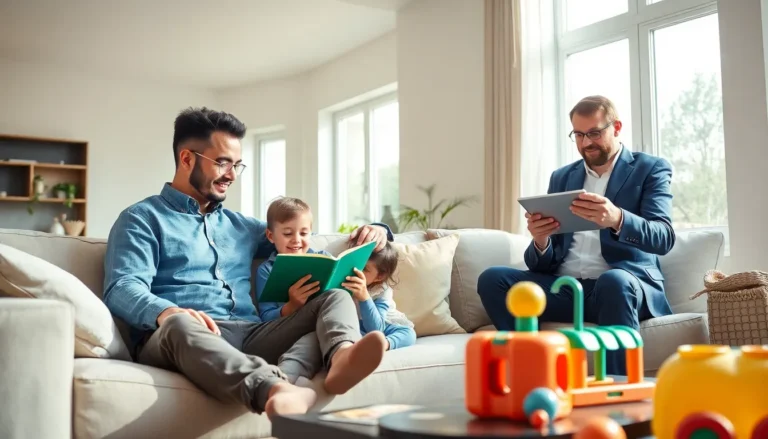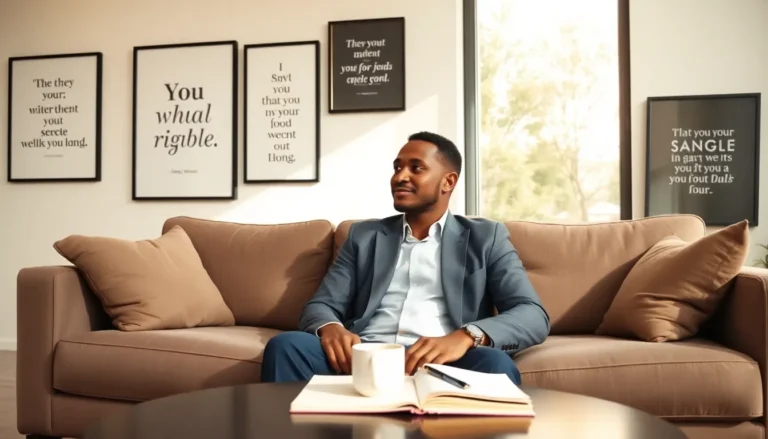Table of Contents
ToggleEvery iPhone owner knows the struggle of keeping that pristine screen safe from scratches and cracks. A trusty screen protector is like a superhero cape for your device, but even heroes need a refresh every now and then. If your protector’s looking more like a battle-worn shield than a crystal-clear guardian, it’s time for a change.
Understanding Screen Protectors
Screen protectors offer essential defense for iPhones, guarding against various forms of damage. Recognizing different types and their advantages enhances user awareness and emphasizes the importance of maintaining device safety.
Types of Screen Protectors
Tempered glass protectors deliver robust protection against impact and scratches. They provide a touch experience similar to the original screen, ensuring minimal disruption. Plastic film protectors offer lightweight, flexible coverage suitable for everyday use. They are typically easier to install than glass options. Liquid screen protectors use a special solution to create a protective coating over the screen, offering an alternative that adapts to the device’s curves. Each type serves specific needs based on personal preferences and usage habits.
Benefits of Changing Screen Protectors
Changing screen protectors restores optimal device protection. Worn or damaged protectors can compromise defense, making replacements essential. Fresh protectors improve touch sensitivity, enhancing the overall user experience. New protectors also reduce glare and fingerprints, contributing to clearer visibility. Regular replacements can maintain the aesthetic appeal of the iPhone, keeping it looking brand new. Prioritizing timely changes ensures continued safety and functionality for everyday use.
Preparing for the Change

Preparation is crucial before changing a screen protector. Gathering the right tools simplifies the process and leads to a successful replacement.
Gathering Necessary Tools
Collect essential items like a microfiber cloth, adhesive tape, and a plastic card. Having these tools handy helps ensure a smooth installation. Avoid dust and debris by using a cleaning solution to wipe the iPhone screen thoroughly. Make sure to also have the new screen protector ready for immediate application. An additional fine brush can assist in removing any stubborn particles. These tools and steps ensure a neat environment for a flawless screen protector change.
Choosing the Right Replacement
Select the right type of screen protector based on personal needs and preferences. Consider options such as tempered glass for maximum durability or plastic film for a lighter feel. Evaluate features like scratch resistance, anti-glare properties, and ease of application when making a choice. Brand reputation also plays a role; trusted brands often provide better warranties and quality assurance. Reviewing user reviews and ratings can guide the selection process, ensuring the new protector aligns with desired protection levels. Prioritizing these factors leads to enhanced device safety and user satisfaction.
Steps to Change Screen Protector on iPhone
Changing a screen protector can enhance the iPhone’s safety and performance. Follow these detailed steps to ensure a successful replacement process.
Removing the Old Screen Protector
Begin by lifting a corner of the old protector gently. Use a plastic card to help pry it off without scratching the screen. Remove the protector slowly to minimize residue left behind. If the adhesive proves stubborn, applying a bit of heat with a hairdryer may loosen it. Discard the old protector responsibly, keeping the environment in mind.
Cleaning the Screen
After removing the old protector, focus on cleaning the screen thoroughly. Utilize a microfiber cloth to wipe away fingerprints and smudges. For stubborn spots, a small amount of screen-safe cleaner can enhance cleanliness. Dust particles can hinder the new protector, so ensure no debris remains on the screen’s surface. A clean screen maximizes the effectiveness of the new protector.
Applying the New Screen Protector
Position the new screen protector carefully above the iPhone’s screen. Align it with the device’s edges for a flawless fit. Once positioned, start at one edge and gradually lower the protector to avoid air bubbles. Smooth out any bubbles using a plastic card, ensuring it adheres firmly. Check for any misalignment and adjust as needed before the protector sets.
Common Mistakes to Avoid
Avoiding common mistakes during screen protector application is crucial for achieving the best results. Paying attention to details can significantly enhance the device’s protection.
Incorrect Alignment
Incorrect alignment often leads to improper fitting of the screen protector. Misalignment can cause edges to lift, making it more susceptible to dust ingress. When applying a new protector, align it carefully with the device’s edges. Ensuring perfect placement reduces the chances of misalignment. If the protector does not fit properly, it may impede touch sensitivity and aesthetics. Many users find success by starting at one edge and slowly lowering the protector to prevent misalignment during the process.
Air Bubbles
Air bubbles can ruin the clean appearance of a newly applied screen protector. These bubbles can trap dirt and lead to a less responsive touch experience. To avoid this issue, applying gentle pressure with a plastic card while smoothing out the protector is effective. Starting from the center and working outward usually helps expel trapped air effectively. If bubbles persist, lifting the protector slightly while pressing down can help eliminate them. Prioritizing bubble-free application enhances the protector’s overall function and appearance.
Changing the screen protector on an iPhone is a straightforward yet essential task that can greatly enhance the device’s longevity. By following the outlined steps and avoiding common pitfalls users can ensure a successful application. Regularly updating the screen protector not only maintains optimal protection but also enhances the overall user experience.
Investing time in selecting the right type of protector tailored to individual needs will pay off in the long run. With a little care and attention to detail the iPhone will remain safeguarded against everyday wear and tear. A well-maintained screen protector is a small but significant step toward keeping an iPhone looking and functioning its best.





